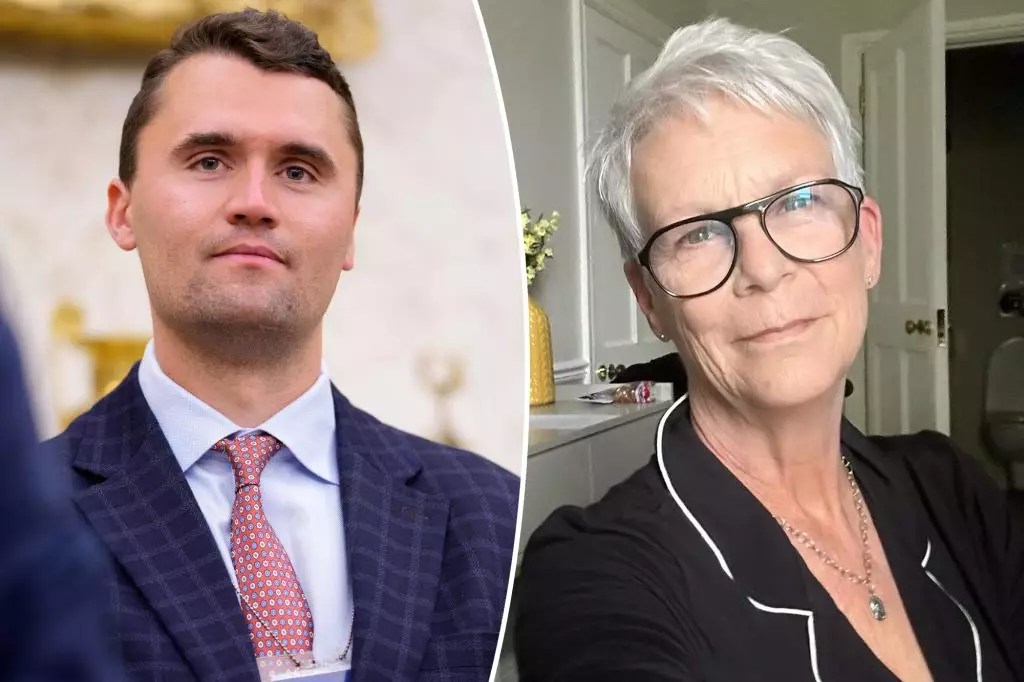In a world saturated with shocking images and gruesome narratives, public figures like Jamie Lee Curtis serve as vital reflections of our collective psyche. Her emotional reaction to Charlie Kirk’s tragic death, despite profound ideological differences, underscores a crucial truth: Beneath political divides lie shared human vulnerabilities. Curtis’s heartfelt grief reveals an innate desire for compassion, reminding us that empathy often transcends our differences. Her openness about feeling connected to Kirk’s faith, even while condemning his beliefs, pushes us to reconsider the shallow boundaries society often erects. Instead of dismissing those we disagree with, perhaps we are called to recognize their humanity first—an act that fosters genuine understanding amid chaos.
Curtis’s tears also point to a broader issue: how society consumes violence. She criticizes the ceaseless barrage of disturbing footage, suggesting that exposure to repeated images of trauma can desensitize us, numbing our capacity for genuine empathy. This phenomenon influences not just individuals but collective attitudes toward violence. Our cultural appetite for sensationalism might inadvertently diminish the moral weight of such tragedies, eroding the empathy that keeps societies humane. Curtis’s honest discomfort invites us to critically examine our media diets and the psychological toll they exact on our mental health.
An Uncomfortable Confrontation of Media and Memory
Curtis’s musings on televised violence extend to historical atrocities, like the assassination of President John F. Kennedy. Her personal connection to that day—marked by the tragic death of a prominent leader—serves as a powerful metaphor for the enduring impact of televised trauma. When traumatic events are constantly relived and broadcast, they risk becoming background noise rather than profound moments of national reflection. Curtis fears that, through relentless imagery, we are becoming desensitized, losing the ability to respond authentically when it truly matters. It’s an alarming thought: are we quietly hardening our hearts against the suffering of others?
Her stance also raises questions about how society processes grief and injustice. Are we moving toward a state where violent death becomes just another tab in the media? Curtis’s refusal to watch Kirk’s footage demonstrates her desire to maintain her emotional integrity, to preserve her sense of humanity. It calls on us as individuals to consider how we engage with tragedy—whether we choose to confront it fully or retreat into numbness. Her vulnerability becomes a call for deeper introspection about our collective psychological health.
Reevaluating Justice, Faith, and Humanity
The tragic death of Charlie Kirk at the hands of a young shooter invites complex conversations surrounding justice, mental health, and societal responsibility. Curtis’s acknowledgment that Kirk was a man of faith, despite her disapproval of his views, challenges us to look beyond labels and ideological battles. It suggests that, regardless of our differences, there is an underlying shared identity rooted in compassion and spiritual connection. Her hope that Kirk felt connected to his faith prior to death hints at a universal longing for solace in moments of crisis—a reminder that faith can be a profound source of comfort even amidst horror.
The case also raises difficult questions about how society responds to violence committed by young individuals. The shooter, Tyler Robinson, is facing severe charges, with many demanding the harshest punishment, including the death penalty. Curtis’s reflections subtly critique a justice system that often emphasizes retribution over understanding. She appears to advocate for a more nuanced view—one that recognizes the pain and circumstances that lead individuals down paths of destruction, without excusing their actions. Her perspective encourages us to grapple with the complexities of justice, mercy, and the human capacity for both goodness and evil.
The Imperative of Cultivating Compassion
Ultimately, Curtis’s emotional display acts as a powerful reminder: social media and mass media have transformed how we relate to violence, often at the expense of our empathy. Her honest admission of discomfort highlights the necessity for society to prioritize mental health and emotional resilience. Instead of passively consuming trauma, we should foster a culture of compassionate engagement—where we mourn with those who suffer and seek to understand the deeper causes of violence.
This moment of vulnerability pushes us to reevaluate our collective priorities. Are we merely spectators of a brutal spectacle, or are we committed to healing ourselves and our communities? Curtis’s reaction poses an urgent challenge: to approach violence not with apathy or sensationalism but with a conscious effort to nurture kindness and understanding in a fractured world. It’s a call for a new narrative—one where empathy, faith, and compassion take precedence over division and detachment. Only by embracing our shared humanity can we hope to build a society capable of confronting its darkest moments with resilience and hope.







Leave a Reply